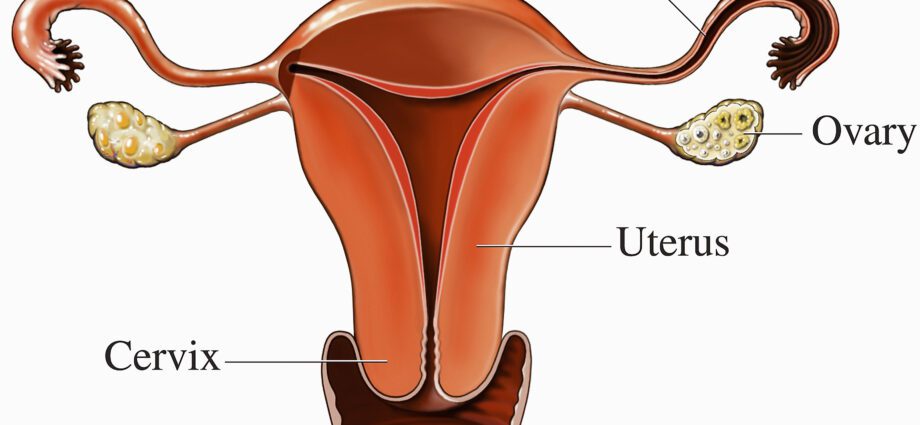Contents
Ovary
The ovaries (from classical Latin ovum, egg) are organs belonging to the female reproductive system. Their main function is the production of oocytes and sex hormones.
Anatomy of the ovaries
Location. Two in number, the female ovaries or gonads are glands located in the small pelvis, at the back of the uterus (1). They also adjoin the fallopian tubes, whose fringes border them to form a pavilion. The ovaries are fixed thanks to different ligaments connecting them to the lumbar wall, to the tube, and to the posterior part of the uterus, and also thanks to the mesovarium.
Structure. Ovoid in shape and 3 to 4 cm long, the ovaries are made up of 2 parts:
- On the periphery: the cortical zone, where the ovarian follicles are located, each containing an oocyte (the latter will then become the ovum)
- In the center: the medullary zone, made up of connective tissues and blood vessels
Vascularization and innervation. The ovaries are supplied by the ovarian arteries. Venous drainage is carried out on the right by the vena cava and on the left by the renal vein (2).
Functions of the ovaries
Egg production. Several ovarian follicles will develop during each menstrual cycle (1). Only one will be selected and, at maturity, the oocyte will be expelled by rupture of the follicle, called ovulation.
Production and secretion of hormones. The ovary is the place of production of two hormones:
- Estrogen, involved in particular in the development of secondary sexual characteristics
- Progesterone, involved in particular in the thickening of the endometrium, the lining of the uterine used as an implantation site for the egg (fertilized egg) (3)
Menstrual cycle. It constitutes the set of modifications of the female genital apparatus in order to be able to receive a fertilized egg. In the absence of fertilization, the endometrium is destroyed, which corresponds to menstrual periods.
Pathologies of the ovaries
Ovarian cancer. Malignant (cancerous) or benign (non-cancerous) tumors can appear in the ovary (4). Symptoms can be pelvic discomfort, cycle problems, or pain.
Ovarian Cyst. It corresponds to a pocket that develops independently of the ovary and whose structure can vary. Two categories of cysts exist:
- The most frequent functional cysts disappear spontaneously (1).
- Organic cysts, which must be taken care of because they can cause discomfort and pain, and be the site of the development of cancer cells.
Ovarian treatments
Surgical treatment. Depending on the pathology and its progress, surgical treatment may be carried out such as laparoscopic surgery in certain cases of cysts.
Chemotherapy. Cancer treatment may be accompanied by chemotherapy.
Ovarian exams
Physical examination. The onset of pain begins with a clinical examination to assess the characteristics of the pain and the accompanying symptoms.
Medical imaging examination. Depending on the suspected or proven pathology, additional examinations may be performed such as ultrasound or x-ray.
Laparoscopy. This examination is an endoscopic technique allowing access to the abdominal cavity, without opening the abdominal wall.
Biological examination. Blood tests can be carried out, for example to detect tumor markers.
History and symbolism of the ovaries
Originally, the ovaries designated only the organs where eggs are formed in oviparous animals, hence the Latin etymological origin: ovum, egg. The term ovary was then assigned by analogy to the female gonads in viviparous animals, which were then referred to as the female testes (5).










